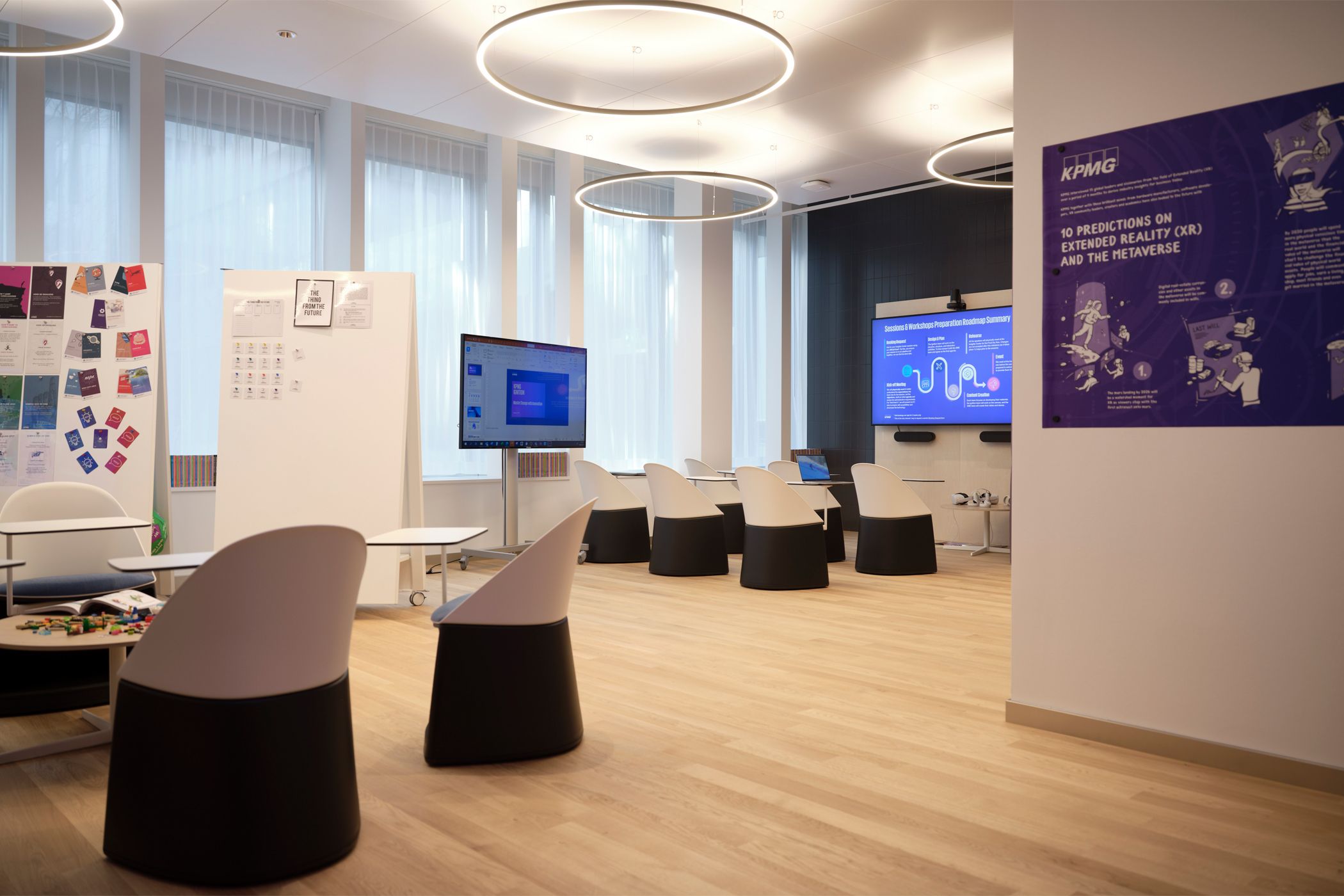In a world where technological innovation is going exponential, demographic shifts are accelerating and profound geopolitical changes are creating instability, businesses are dealing with more unknowns than knowns.
The Lab equips you to respond effectively through collaborative workshops design and expert facilitation based on KPMG’s proprietary methods and other proven methodologies such as Design Thinking and Futures Thinking.
KPMG Design for Business Innovation
An approach which combines the best practices of traditional, product- and service-focused Design Thinking with KPMG’s deep expertise in business strategy and innovation.
KPMG has developed a unique methodology and a toolkit which combines elements of futures thinking and design thinking to identify and frame the real issues that businesses like yours need to tackle, and then uses creative approaches and gamification to generate a wide range of possible solutions.

Delivering value by design
KPMG Design for Business Innovation scales to an enterprise-wide level, and can be practically applied at all levels of an organization, regardless of whether the need is for incremental, disruptive, or breakthrough innovation.
Our unique toolkit solves the complex problems that arise from high levels of uncertainty and disruption.
It delivers value when:
- Multiple problems need to be explored at the same time, requiring an initial time investment in problem finding and problem understanding
- There is a need to focus on business processes
- Cross-functional organizational alignment is critical

Design Thinking
A human-centered approach to innovation which draws from the designer’s toolkit and relies on co-creation
Whether you’re looking to improve your products, services or processes, our design thinking methodology provides a structured approach that allows for a deeper understanding of your customers’ needs and desires, leading to innovative solutions that deliver results.
Design thinking has been described as a discipline that uses the designer’s sensibility and methods to match people’s needs with what is technologically feasible and what a viable business strategy can convert into customer value and market opportunity. It delivers value when:
- The problem at hand is highly complex or ill-defined
- The project is greenfield and there is no obvious known solution
- Ensuring human centricity of the solution is a key requirement
- There is a need to act fast and accelerate the decision-making process
Futures Thinking
A cross-disciplinary approach aiming at critically considering possible futures in order to make better decisions, align strategically and gain agency in the present.
Through futures thinking, we can help you identify new opportunities, anticipate potential challenges and develop strategies that are robust and resilient in the face of uncertainty. Our team of experts can guide you through the futures thinking process, providing you with the tools and insights you need to create a future-ready organization.a
Futures Thinking creates alternative futures through the exploration of “signals of change” which leads to development of different scenarios. This includes evaluating what scenarios are possible, building hypothesis, identifying a company’s desirable future and defining steps for making it a reality.
It delivers value when:
- There is a need to explore truly unknown strategic territory
- Questions at hand concern cross-sector challenges or fundamental topics such as ESG, future of work, future of cities, evolution of AI
- Focus is on deep tech innovation versus shallow tech
- There is a need to align various stakeholders from diverse backgrounds (e.g. scientific community, business, policymakers, start-ups, technology providers)

